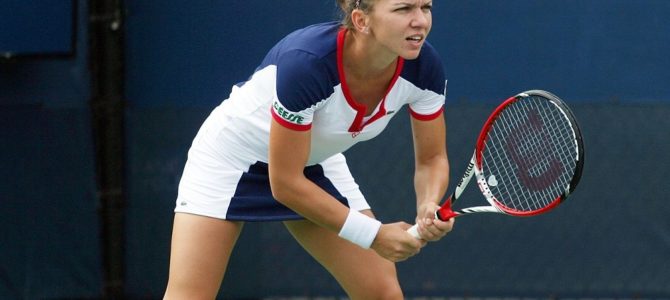Summer ends every year for me with the U.S. Open, two straight weeks of tennis that begin late each morning and often run into the early hours of following day. From the first-round matches to the finals, I watch nearly all of it.
The U.S. Open is the guiltiest of pleasures. It’s easy to lose one’s self in the tournament, neglecting my daily reading and letting the laundry hamper overflow. The event, which concludes this year with the men’s final on September 9,, marks the 50th anniversary of the year’s final Grand Slam. There was a glitzy opening night with pop star Kelly Clarkson, and celebrations of the 50 men and 50 women who have won over the years.
As the wife of an historian, I should have more appreciation for the history of the game and its past champions. But much of what I love about watching tennis is its ability to keep me squarely in the present. During a match I am completely captivated, running from room to room during commercials, loudly cheering for my player.
While I consider myself quite athletic, tennis for me is a spectator sport of the at-home variety. I’m not much into crowds, and have a strong aversion to sun and heat. As such, I’ve never been to Flushing Meadows.
Nor do I care to go. For two delicious weeks every year I stick close to home and our TV. My favorite time of the U.S. Open is the first few days of the tournament. Everyone plays. Anything can happen. This year the big upset, as it is called when a lower-seeded player overtakes a top 10, happened in the first hours of the tournament, when the 44th-ranked Kaia Kanepi took out world number one Simona Halep in straight sets.
I used to think the competitive nature of the sport is what appealed to me. But now I realize it has more to do with the moral narrative. The real stars of tennis learn to believe in themselves and never give up. Many of their hard-won attributes translate well into real life. Here are a few examples.
Develop a short memory. It’s crucial for a tennis player to learn to let go of the poorly executed shot he hit five seconds ago and concentrate instead on the next point. Translation: don’t beat yourself up over past mistakes. Focus on making better choices in future.
Don’t look too far down the road. “Have you SEEN who your opponent is in the round of 16?” an inquisitive commentator will ask at the start of a tournament. The smart player replies, “I don’t look at the draw, preferring to concentrate only on my very next match.” Translation: Instead of worrying where your kid will get into college if she opts for creative writing over advanced history in 10th grade, focus on what you can do to help her get the most out of the classes she is currently taking.
Never give up. At this year’s French Open final, Halep was down a set and a half. Her opponent, last year’s U.S. Open champion Sloan Stephens, was three games from the win. Frustrated and emotional, Halep reset, altered her strategy, and took home the trophy. Translation: Persistence pays off.
“It’s no accident, I think, that tennis uses the language of life,” two-time U.S. Open winner Andre Agassi wrote in his autobiography, “Open.” “Advantage, service, fault, break, love, the basic elements of tennis are those of everyday existence, because every match is a life in miniature.”









